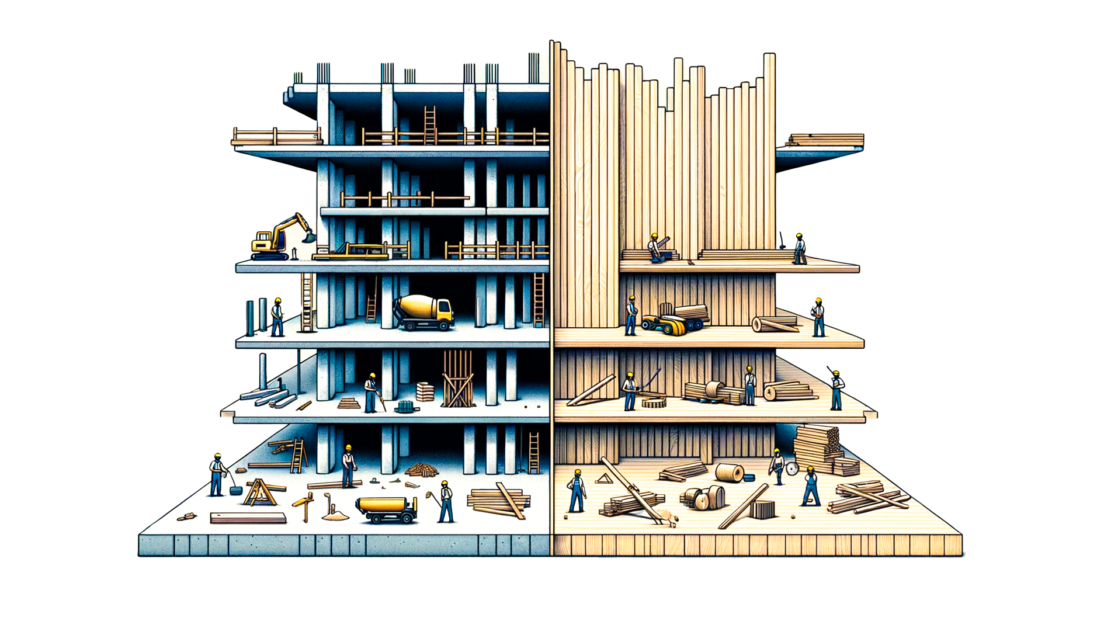Environment, costs and aesthetics: a comparison of concrete and wood

The choice between concrete and timber as building materials for construction projects is crucial as they have far-reaching effects on the environment, construction costs, longevity of structures and aesthetics. Both materials have their own advantages and disadvantages that need to be considered when planning construction projects.
Pro wood: the sustainability and warmth of wood
Wood, a natural and regenerative material, has been used in construction for thousands of years and is currently experiencing a revival in modern architecture, particularly in the area of sustainability and environmental protection. As it grows, wood binds CO2, which can help to reduce carbon dioxide emissions and thus counteract climate change. In addition, wood offers a warm and inviting aesthetic that is appreciated in many design concepts.
Pro concrete: robustness and durability
Concrete, a mixture of cement, water, sand and rock, is characterized by its remarkable strength and durability. It is highly resistant to fire, water and pests, making it a popular building material for a wide variety of structures such as high-rise buildings and bridges. In addition, concrete has excellent sound-absorbing properties and can be shaped into any desired form, which underlines its versatility.
Contra wood: Wood used in construction is more susceptible to fire, pests and moisture. Special measures are therefore required to protect and maintain it.
Contra concrete : The production of concrete is very energy intensive and results in a significant amount of CO2 emissions, which raises concerns about its environmental impact.
The decision between concrete and wood depends on several factors, including the specific requirements of the project, environmental impact, cost and desired aesthetics. Concrete is prized for its strength and durability, while timber offers benefits in terms of sustainability, carbon footprint and natural beauty. Careful consideration of these characteristics is critical to making an informed decision that meets both the short-term needs of the project and the long-term goals of sustainability and environmental protection.